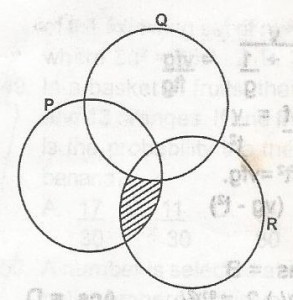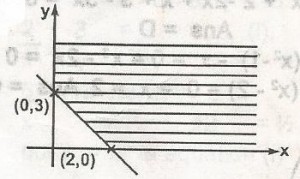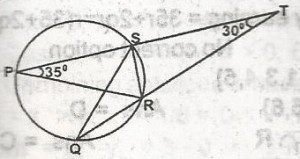1998 - JAMB Mathematics Past Questions and Answers - page 3
21
\(\begin{array}{c|c} \text{Average hourly earnings(N)} & 5 - 9 & 10 - 14 & 15 - 19 & 20 - 24\ \hline \text{No. of workers} & 17 & 32 & 25 & 24\end{array}\)
Estimate the mode of the above frequency distribution
Estimate the mode of the above frequency distribution
A
12.2
B
12.27
C
12.9
D
13.4
Ask EduPadi AI for a detailed answer
Share this question
22
Find the variance of the numbers k, k+1, k+2,
A
\(\frac{2}{3}\)
B
1
C
k + 1
D
(k + 1)2
Ask EduPadi AI for a detailed answer
Share this question
23
Find the positive value of x if the standard deviation of the numbers 1, x + 1 is 6
A
1
B
2
C
3
D
4
Ask EduPadi AI for a detailed answer
Share this question
24
A bag contains 16 red balls and 20 blue balls only. How many white balls must be added to the bag so that the probability of randomly picking a red ball is equal to \(\frac{2}{5}\)
A
4
B
20
C
24
D
40
Ask EduPadi AI for a detailed answer
Share this question
25
In a recent zonal championship games involving 10 teams, teams X and Y were given probabilities \(\frac{2}{5}\) and \(\frac{1}{3}\) respectively of winning the gold in the football event. What is the probability that either team will win the gold?
A
\(\frac{2}{15}\)
B
\(\frac{7}{15}\)
C
\(\frac{11}{15}\)
D
\(\frac{13}{15}\)
Ask EduPadi AI for a detailed answer
Share this question
26
If x, y can take values from the set (1, 2, 3, 4), find the probability that the product of x and y is not greater than 6
A
\(\frac{5}{8}\)
B
\(\frac{5}{16}\)
C
\(\frac{1}{2}\)
D
\(\frac{3}{8}\)
Ask EduPadi AI for a detailed answer
Share this question
27
For what value of x does 6 sin (2x - 25)o attain its maximum value in the range 0o \(\leq\) x \(\leq\) 180o
A
12\(\frac{1}{2}\)
B
32\(\frac{1}{2}\)
C
57\(\frac{1}{2}\)
D
147\(\frac{1}{2}\)
Ask EduPadi AI for a detailed answer
Share this question
28

A
(P \(\cap\) Q) \(\cup\) R
B
(P \(\cap\) Q) \(\cap\) R
C
(P \(\cap\) Q1) \(\cap\) R
D
(P \(\cap\) Q1) \(\cup\) R
Ask EduPadi AI for a detailed answer
Share this question
29

A
x \(\leq\) 0, y \(\leq\) 0, 2y + 3x \(\leq\) 6
B
x \(\geq\) 0, y \(\geq\) 3, 3x + 2y \(\geq\) 6
C
x \(\geq\) 2, y \(\geq\) 0, 3x + 2y \(\leq\) 6
D
x \(\geq\) 0, y \(\geq\) 0, 3x + 2y \(\geq\) 6
Ask EduPadi AI for a detailed answer
Share this question
30

A
20o
B
25o
C
30o
D
35o
Ask EduPadi AI for a detailed answer
Share this question